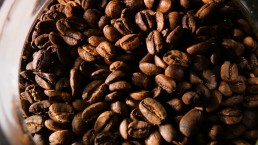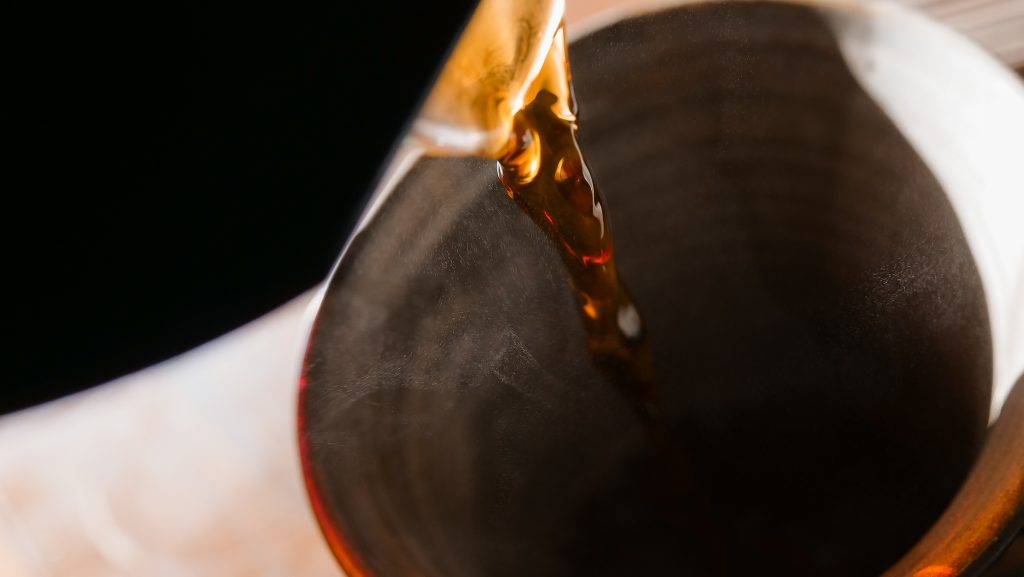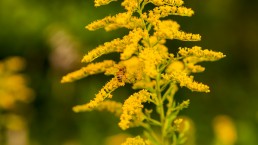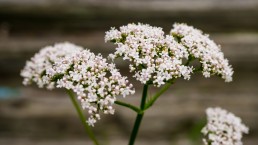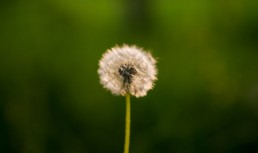Coffee: The Good the Bad and the Ugly
An Historic Global Enterprise
Coffee is one of the most ubiquitous and widely consumed beverages in the world, second only to water. The already extraordinary demand for coffee only seems to be increasing; global coffee production reached 175.35 million 60-kilogram bags as of 2020/2021, increasing from about 165 million 60-kilogram bags in 2019/2020.
Coffee drinking, and the knowledge of the coffee tree as a medicinal substance, dates back to at least the mid 15th century, where we find our first credible historical evidence pertaining to its use in the accounts of Yemini author Ahmed al-Ghaffar. The coffee tree was most likely introduced into Yemen by way of trade routes with Ethiopia from across the Red Sea. Thus, given that the coffee tree was being traded and exported from Africa, it is highly unlikely that its medicinal, recreational, and social values were only realized in the 15th century, in a country where the tree itself was not native. The use of coffee almost certainly reaches back much further than the 15th century, though specifics concerning its initial discovery by the peoples of the African continent and its use in their traditional systems of medicine and culture remain obscure.
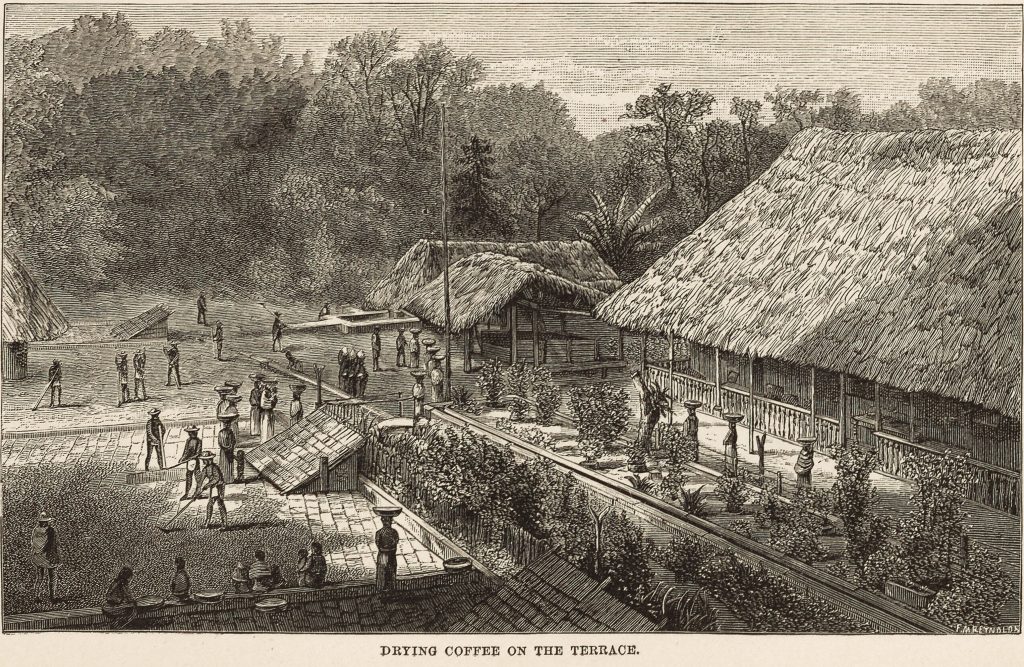
When it comes to the earliest detailed historical records concerning the use of coffee, we can look to the work of Harvard historian Cemal Kafadar, where it is revealed that the social significance of coffee in Islamic society was established by way of its use in Sufi religious rituals:
“To turn to the early history of coffee and coffeehouses, more specifically, there must have been many instances when coffee was consumed as a plant found in the natural environment of Ethiopia and Yemen, but the earliest users who regularized its consumption as a social beverage, to the best of our knowledge, were Sufis in Yemen at the turn of the fifteenth century. Evidently, they discovered that coffee gave them a certain nimbleness of the mind, which they were keen on cultivating during their night-time vigils and symposia. Thus started the long history of the appreciation of coffee as a companion to mental exercise and conviviality, particularly when one wished to stretch or manipulate the biological and social clock.”1
The Start of The Coffee House Phenomenon
It is from this point onward that coffee houses started to appear across Arabia and gradually, over the next three centuries, throughout the rest of the world. The historical significance of the coffee house is inextricably bound up with the historical significance of coffee itself; the coffee house has always served as a kind of public institution and cultural hub through which all manner of information – from the common and mundane to the revolutionary and political – was shared and disseminated amongst the population. Even today, in a world increasingly characterized by digital identities and disembodied forms of social engagement, the coffee house still serves as a place of respite, where people can turn for a semblance of embodied interpersonal interaction and exchange in an evermore alienating and depersonalizing world.
Coffee’s appearance in Europe (especially England and Germany) in the late 17th century coincided with the discovery that clocks could be controlled by harmonic oscillators. This was followed in the 18th century by a series of technological discoveries and breakthrough inventions that lead to increasingly precise clocks, and hence to a heretofore unimaginable regimentation of time itself. Is it a mere coincidence that coffee – utilized by so many for the purposes of maintaining attention and increasing stamina – came to Europe just as machine production and the Industrial Revolution, with the inhuman demands it placed on workers, led to a decline in hand production and the artisanal trades of the past? From the perspective of cultural history, coffee has a dual identity; as a tool for social conviviality and the free flow and exchange of ideas (exemplified by the institution of the coffee house), as well as a crucial ingredient in the engineering of the industrial worker, allowing for the kind of over-stimulation that is required to meet the demands of the fast paced, mechanized world of industrial society. The hegemony of standardized clock time, and the counting of seconds, minutes and hours as measures of productivity and profitability, violated the natural diurnal rhythms that human beings had always used to orient their lives. The question remains as to the extent to which coffee played a role in one of the biggest cultural shifts in recorded history.
Historical Religion and Politics
The opinion of the medical profession with respect to coffee has been divided throughout history. Coffee is exemplary when it comes to demonstrating the degree to which medical opinion can be deeply influenced and shaped by cultural and political trends and assumptions. Indeed, the medical, socio-political and religious views of coffee were at times inextricably bound up with each other, making it next to impossible to disentangle one from the other. Where does religious belief end and medical “fact” begin? We can explore this issue by taking a closer at the early history of coffee in the Islamic world, and the changing tide of opinion with respect to the most influential and powerful drink in the world, next to water itself.
In contrast to the view that the introduction of coffee into liturgical practice was a great blessing in that it allowed worshipers to better execute their devotions to God, other religious scholars argued that coffee should be outlawed insofar as it had never been mentioned in the Quran. Many of these scholars were also concerned about what they perceived to be the deleterious health consequences of coffee consumption. But this controversy is even further muddied when we stop to consider the political climate of the time. While some commentators argue that the various attempts to outlaw coffee in the Islamic world were a consequence of religious and medical opinion, the truth is more likely that coffee (and the social revolution spurred by the birth of the coffee house) was perceived as a political threat.
“Between the early 16th and late 18th centuries, a host of religious influencers and secular leaders, many but hardly all in the Ottoman Empire, took a crack at suppressing the black brew. Few of them did so because they thought coffee’s mild mind-altering effects meant it was an objectionable narcotic (a common assumption). Instead most, including Murad IV [the Ottoman sultan who issued a ban on coffee in 1633], seemed to believe that coffee shops could erode social norms, encourage dangerous thoughts or speech, and even directly foment seditious plots.”2
In what is perhaps an unexpected twist, our brief survey of the cultural and political history of coffee has revealed the extent to which many of our deeply held assumptions, sometimes taken as objective fact, in actuality rest upon a socio-political and theological underpinning of opinion and currents of dogmatic belief which colour our perception, of which we may be mostly or even totally oblivious.
PART II: Coffee as Medicine, Coffee as Poison
What is the difference between a food and a medicine? In his essay from 1803 titled ‘On the Effects of Coffee’, Samuel Hahnemann (the founder of homeopathy) set out to clarify this distinction and to warn of the deleterious effects of the unchecked consumption of medicinal substances, taking coffee as a paradigmatic example. Hahnemann writes:
“Medicinal things are substances that do not nourish, but alter the healthy condition of the body; any alteration, however, in the healthy state of the body constitutes a kind of abnormal, morbid condition. Coffee is a purely medicinal substance. All medicines have, in strong doses, a noxious action on the sensations of the healthy individual. No one ever smoked tobacco for the first time in his life without disgust; no healthy person ever drank unsugared black coffee for the first time in his life with gusto — a hint given by nature to shun the first occasion for transgressing the laws of health, and not to trample so frivolously under our feet the warning instinct implanted in us for the preservation of our life.”3
A medicine is a substance that serves to alter the state of health, whereas a food is a substance that serves to provide nourishment. When medicines are taken in excess, or when they are not properly indicated for an individual person, they can produce an abnormal or even pathological condition. Medicines can preserve life and maintain health, though they can also derange the state of health and take life away when they are given without the requisite attention or care. Food substances can likewise produce states of disease if they are eaten to excess, though the deleterious effects of foods generally take a much longer time to manifest when compared to the stronger power of medicinal substances to affect deep seated changes on the level of constitutional vitality.
While in 1803 Hahnemann condemned the use of coffee, going to so far as to argue that its unchecked consumption was the origin of many of the chronic diseases that plagued humanity, he later toned down his opinion, having developed a much more sophisticated theory of the origins of chronic diseases by way of the concept of the miasms (the 18th century precursor to our contemporary theories of epigenetics, and one of the philosophical foundations of homeopathic medical practice to this day). Nevertheless, Hahnemann was right to emphasize the extent to which medicinal substances, when treated as foods and consumed injudiciously, can exert profound effects on the state of health. This is especially true if conditions of heightened susceptibility to a given substance are at play in an individual’s constitution (think here of the example of severe allergic reactions to substances that to most people are extremely benign). Human response to coffee and to caffeine varies widely, and like any assessment of a medicinal substance, individual response patterns must always be given a higher regard than overly generalized, universal theories and pronouncements. The difference between a medicine and a poison is ultimately in the dose, and the effect of the dose is always weighed in relation to the individual to whom it is administered.
The Hahnemann of 1803 represents one extreme when it comes to thinking about coffee as medicine. A look at the medical literature on coffee, from from the 15th century to the present day, is full of contradictory and opposing points of view. Coffee was for centuries listed in the pharmacological and medical literature that herbal and Eclectic physicians relied upon, such as the Codex Medicus. Coffee remained classified as a medicinal substance in materia medica and pharmacopoeias until the twentieth century, when the use of natural medicinal substances was largely supplanted by the products of the petrochemical drug industry. Maria Letícia Galluzzi Bizzo et al. recount some of the claims made about coffee in the medical traditions of the West, emphasizing and siding with the view of coffee as a universal elixir of health (the poplar opposite of Hahnemann’s position):
“As a panacea, coffee has been prescribed as infusions, capsules, potions, or injections against a vast spectrum of diseases— from hernias to rheumatism, from colds to bronchitis. In the first half of the nineteenth century, medical controversies underlined the therapeutic use of caffeine in chronic conditions such as heart and circulation problems because of difficulties establishing the proper doses and the risk of toxicity to the heart. Nevertheless, the notion that such use would be safe prevailed. Recent research has opened new horizons regarding the use of coffee as a medicine, with discoveries of possible distinct preventive and curative applications of coffee’s substances.”4
The Coffee of Today
The medical opinions of the past are in many ways inadequate when it comes to judging the effects of coffee today. The coffee of the 1800s is not the coffee of the 21st century. Consider, for example, the question of pesticides. Only about 3% of the world’s coffee supply today is produced using organic methods, and we now know that the residues of pesticides found on coffee beans, one of the most pesticide ridden agricultural products in the world, are for the most part not destroyed by the roasting process. Many countries that produce coffee use pesticides that have been banned in North America and Europe over health and safety concerns, and a significant number of the countries which import this coffee do not have maximum residue limits (MRLs) when it comes to the pesticides that are used and can be detected on the harvested coffee beans.

Mold is yet another issue. When not stored in a temperature controlled storage facility, coffee beans are also highly susceptible to developing mold, which comes with its own host of long term adverse health effects. Even roasting techniques have a great bearing on coffee’s potential effects on one’s state of health. One study carried out by the International Association for Food Protection, for example, comes to the following ambiguous conclusion concerning the question of the carcinogenicity of coffee and how this is affected by the roasting process:
“Roasting coffee results in not only the creation of carcinogens such as acrylamide, furan, and poly-cyclic aromatic hydrocarbons but also the elimination of carcinogens in raw coffee beans, such as endotoxins, preservatives, or pesticides, by burning off. However, it has not been determined whether the concentrations of these carcinogens are sufficient to make either light or dark roast coffee more carcinogenic in a living organism.”5
There are a whole host of other socio-economic and political considerations that should be borne in mind with respect to the global coffee industry of the 21st century. Health is not a purely individual consideration; the health of your body and mind are indissociably bound up with the functioning of the larger natural and artificial systems in which you exist. We are unwitting participants in a global system of capitalist exploitation which, through the untiring impulses of profitability and expansion, inevitably leads towards the total degeneration of the natural world and the complete immiseration of its inhabitants. A sober and careful look at coffee and its economic, political, and agricultural ramifications, inevitably alerts us to a confrontation with this reality.
Capitalism, Globalization, and the Politics of Coffee Production:
The pesticide residues found in your average bag of coffee are inconsequential in comparison to the toxicity that third world coffee farmers are exposed to on a daily basis. These farmers, in addition to the dire health consequences of chronic chemical exposure that are an unavoidable part of their work, lead lives that are dictated by the brutal conditions of strenuous labour, physical exploitation and the inter-generational cycles of inescapable poverty, child labour and indentured servitude. Alice Nguyen, in an article written for The Borgen Project (a non-profit organization dedicated to addressing the global issues of poverty and hunger), unflinchingly encapsulates these issues:
“Growing coffee requires intensive manual work such as picking, sorting, pruning, weeding, spraying, fertilizing and transporting products. Plantation workers often toil under intense heat for up to 10 hours a day, and many face debt bondage and serious health risks due to exposure to dangerous agrochemicals. In Guatemala, coffee pickers often receive a daily quota of 45 kilograms just to earn the minimum wage: $3 a day. To meet this minimum demand, parents often pull their children out of school to work with them. This pattern of behavior jeopardizes children’s health and education in underdeveloped rural areas, where they already experience significant barriers and setbacks.”6
Facts like these seem to underlie the importance of Fairtrade and Organic Certification for coffee and related products, which in principle strive to ensure sustainable development, equitable trading conditions, and giving autonomy back to marginalized farmers and agricultural workers. However, consumers in the Western world must not fall into the self-congratulatory trap of thinking themselves morally superior because they are able to afford the often vastly more expensive Organic and Fairtrade Certified products that are simply outside of the economic reach of many. The reality is that, in many instances, the increased profits from organically grown coffee products do not reach the farmers and laborers themselves, but end up lining the pockets of the distributors, who in many regions of the world function in similar ways as do drug cartels.
What is more, there are the significant and rarely discussed pitfalls of introducing organic agricultural techniques to farmers who work on lands that have been treated with chemical pesticides for decades. Such agricultural land will require significant time and effort in order to be rehabilitated such that organic farming can be sustained there. This means that farmers who are already struggling to maintain their operations run the risk of falling even further into economic enslavement if they are coerced into adopting the organic methods that righteous and ecologically minded politicians, consumers, academics and other self proclaimed “experts” in the Western world preach about with moral fervour.
Consider the following story, told by the son of a soybean farmer working in El Toledo, Costa Rica. He recalls a childhood memory of the year his father was convinced by Penn State University professors to adopt organic agricultural techniques, under the promise of increased profitability and the ecological restoration of their farmland:
“The professors convinced my dad to make a wholesale change from conventional soybean farming to organic. They warned him that he might lose up to 15% of his yield, but that this would be offset by a number of factors: He could sell his soybeans for more, as they were organic. His soil would be healthier. He would spend less on chemical inputs, and thus save money. The reality was very different. Instead of losing 15% of our yield, we lost 50%. Instead of spending less money, he spent more: the gas he spent to tractor over the weeds alone outstripped his usual chemical spending.
He ended up taking a job in a factory to avoid bankruptcy. All I remember is that when I was eight, I never saw my dad: he was either weeding the soybeans or at the factory. As soon as that season ended, we went back to chemical farming.”7
Many such stories, pertaining to all manner of farming from all parts of the world, can be found if one cares to look beyond the ‘Certified Organic’ and ‘Fairtrade’ labels that one sees plastered on one’s favourite products lining the local supermarket shelves. From coffee and soybeans to chocolate and Brazil nuts and beyond, the exploitation of labourers and the degeneration of the world’s ecosystems are part and parcel of our contemporary agricultural systems of production, whether conventional or organic. Any consideration of “sustainability” must always be understood within the framework of the global capitalist economic system in which we exist. As the political and cultural theorist Mark Fisher so poignantly put it in his book Capitalist Realism: Is There No Alternative?:
“The relationship between capitalism and eco-disaster is neither coincidental nor accidental: capital’s ‘need of a constantly expanding market’, its ‘growth fetish’, mean that capitalism is by its very nature opposed to any notion of sustainability.”8
The preceding section of this article is not intended to inculcate feelings of guilt, a sentiment which only leads to a place of demoralization and further defeat. Rather, it was written out of an honest assessment of the situation in which we all find ourselves as consumers in a system which, in its vast complexity, far transcends the individual decisions that you and I make on a daily basis. It is only from a place of sober awareness that a genuine desire for a better world can be nurtured and allowed to bear fruit.
And now, with these economic, cultural and political factors in mind, let us turn to consider the detailed effects of coffee from a more purely medical perspective. A well rounded discussion of coffee requires that we adopt a multi-perspective view. Single vision is, after all, what the capitalist system of exploitation itself is based on.

PART III: Coffee’s Medicinal Effects: What Can Reliably Be Said?
Coffee is a nervine stimulant, i.e. an herb that causes excitation and stimulation of the nervous system, specifically by engaging or heightening the activity of the sympathetic nervous system. The most widely known and discussed function of the sympathetic nervous system is the mediation of the neuronal and hormonal stress response pattern known as the fight-or-flight response. The sympathetic nervous system is what allows the body to quickly react and respond to situations of threat and danger, to situations that threaten survival. But the sympathetic nervous system cannot be adequately understood if we look at it as an isolated regulatory or physiological function. The sympathetic nervous system works in concert with the parasympathetic nervous system and together make up what is called the autonomic nervous system. The autonomic nervous system regulates and controls many of the functions of the body’s internal organs. When we consider the interdependence and co-functioning of the sympathetic and parasympathetic nervous systems, then we can begin to understand that the stress response typically associated with the sympathetic nervous system is one pole or extreme of a greater homeostatic controlling mechanism which oversees the feeling and function of the human organism on many levels.
However, excessive stimulation of the sympathetic nervous system can and does result in undue consequences. Herbalist David Hoffmann explains the action of nervine stimulant herbs, and relates their functions to the excessively heightened states of excitation that characterize the frantic and overwrought patterns of 21st century existence:
“Direct stimulation of nervous tissue is not often needed in our hyperactive modern lives. In most cases, it is more appropriate to stimulate the body’s innate vitality with the help of nervine or bitter tonics. These herbs work to augment bodily harmony, and thus have a much deeper and longer-lasting effect than nervine stimulants. In the 19th century, herbalists placed much more emphasis upon stimulant herbs. It is, perhaps, a sign of our times that the world now supplies us with more than enough stimulation. When direct nervine stimulation is indicated, the best herb to use is Cola acuminata, although Paidlinia cupana, Coffea arahica, Ilex paraguayensis, and Camellia sinensis may also be used. One problem with these commonly used stimulants is their side effects; they are themselves implicated in the development of certain minor psychological problems, such as anxiety and tension. Some of the volatile oil-rich herbs are also valuable stimulants. Some of the best and most common are Rosmarinus officinalis and Mentha piperita.”9
Caffeine is the most widely recognized and studied active ingredient in coffee as well as many other stimulant herbs (such as those listed in the above quotation). But coffee also contains a wide array of other important constituents such as tannins, fixed oils, carbohydrates, and proteins, which should not be forgotten, as coffee, just like all herbs, are irreducible to their component parts. It is through the roasting process that caffeine is liberated from the raw coffee bean. Caffeine produces diuretic and stimulant effects, specifically on the respiratory, cardiovascular and central nervous systems.10 Caffeine is also an analgesic adjuvant, and hence is incorporated into a wide number of proprietary aspirin and acetaminophen preparations.11 Coffee also contains phytoestrogens, which have been subject of a great deal of scientific debate. Phytoestrogens can play a role in addressing symptoms and conditions caused by estrogen deficiency, which may be especially pronounced in premenopausal and post-menopausal women. They are also implicated in memory and learning processes and have been shown to possess anxiolytic effects. The research into the effects of phytoestrogens on human health is still ongoing, and is a fruitful and fascinating area of research. For example, consider the fact that the consumption of beer, bourbon, mescaline, cannabis, and coffee all produce phytoestrogenic effects – the relationship between psychoactivity and phytoestrogenic compounds certainly needs to be more deeply explored!
When it comes to consider possible contraindications and adverse reactions from coffee consumption, we should note that coffee, along with fried and fatty foods, chocolate and alcoholic beverages, can lead to or serve to aggravate LES dysfunction (the lower esophageal sphincter, which links the esophagus and the stomach). Obesity, pregnancy, cigarette smoking, and a structural weakness of the diaphragm known as hiatus hernia can also contribute to a weakening of the LES. If the LES fails to properly close, stomach acid can easily splash up from the stomach into the esophagus, leading to severe acid reflux and heartburn. Gastroesophageal reflux disease (commonly known by the acronym GERD) is associated with a leaking of stomach contents back into the esophagus. When there is a prolonged period of LES dysfunction, this can lead to acid and chemical damage of the esophagus, that is, to GERD.
The consumption of coffee and other caffeine containing substances can also result in headaches. The headaches that are associated with coffee consumption are often related to caffeine dependence, which can lead to significant withdrawal symptoms in some individuals. As Hoffmann writes:
“Caffeine can cause headaches by increasing the body’s expectation for it. When blood levels of caffeine drop, symptoms of withdrawal, including headache, may set in. That’s why some heavy coffee drinkers experience “morning headache” until they have that first cup of coffee. Caffeine headaches are usually experienced as a dull, throbbing pain on both sides of the head. Once the body rids itself of caffeine, the headaches disappear on their own. Such headache sufferers, however, are often unaware that their problem is due to caffeine and will continue to drink coffee, ensuring that the problem will recur.”12
We can look to the homeopathic literature to round out our consideration of the spectrum of effects that coffee can have. In homeopathy, the medicinal effects of a given substance are elaborated through clinical experience as well as through provings. A proving entails rigorous and detailed observation of the effects of a substance when administered at a sufficient dosage in its crude form and/or as a dynamic or potentized medicine (having been subjected to serial dilution and succussion or vigorous shaking), such that it produces modifications to the state of a person’s health and disposition. The fundamental principle of homeopathic prescribing is that like treats like. In other words, if a substance can cause a certain symptom on the physical, mental/emotional, or dispositional level in a relatively healthy person, then it can in like manner work to treat those same symptoms when they are expressed by a patient who comes seeking care.
Dutch Homeopath Jan Scholten describes the essence of the patient needing potentized coffee (Coffea Arabica) in the following way:
“Coffea is the ideal intellectual worker. They feel stable, focused and self-confident in their mind… They are independent and responsible, following their own plans.”13
The coffea patient often possess a great deal of stability, they are responsible, hard working, persevering, and their actions are well organized and carefully planned. Coffee in its crude form can serve to promote these qualities in people, so it is no wonder that many rely upon it in a culture which emphasizes work, productivity, and efficiency. Scholten explains that the mind of the coffea patient can be active and full of ideas. They can have clear, active, and lucid thoughts, are fast and easy learners with great comprehension skills. They can experience a rush of thoughts, a heightened sense of judgment and sharp and acute states attention. They tend to be quite ambitious people, with a strong and even overpowering need to achieve. They can feel that they must work as hard as possible to fulfill their own expectations, as well as the expectations of their parents (especially the father). Given the great demands that they place upon themselves, and the seriousness with which they approach their assigned tasks and responsibilities, the coffea patient can experience states of pronounced nervous agitation, excitement, exaltation, hilarity, restlessness and irritability – think of the states associated with and over-excitation of the nervous system.
Oversensitiveness is a keynote of this remedy, and all of the senses – sight, hearing, smell, taste, and touch – can be greatly heightened. Eating and drinking are things that they do quickly and in a hurried way, as befits their general tendency towards restlessness, hurry, and hyperactivity. The coffea patient may also be the type of person who feels that they cannot live up to the pronounced and unrelenting demands and expectations that they are faced with, and hence suffer from a lack of self confidence, which is improved through the use of stimulants. They feel things intensely, and can have a tendency to exaggerate their emotions and be highly susceptible to the impressions to which they are exposed. Emotional excesses, from extraordinary states of pleasure, optimism, and joy (coffea is a remedy for ailments from excessive joy) to the polar opposite of pronounced despair and despondency, with sharp anger and rudeness. When in this latter state, they can throw everything away, disposing of all that they have been given – in contrast, they can also be excessively clingy, and want to desperately hold on to people and their possessions. They feel pain intensely, and their anguish can run deep. Coffea can have the following delusions: “paradise, magnificent grandeur, beautiful world, heavenly scenes.” They experience states of benevolence and idealism, with a desire to perform good deeds, and veneration for the Supreme Being. Coffea may be prescribed for “ailments from vexation, mortification, frustration; discords between relatives, friends; hurry; anticipation; sudden emotions, pleasurable surprises.” The treatment of a variety of headaches, neuralgic pains and spasmodic afflictions, heart palpitations, digestive disturbances, and states of insomnia may also be addressed with coffea.
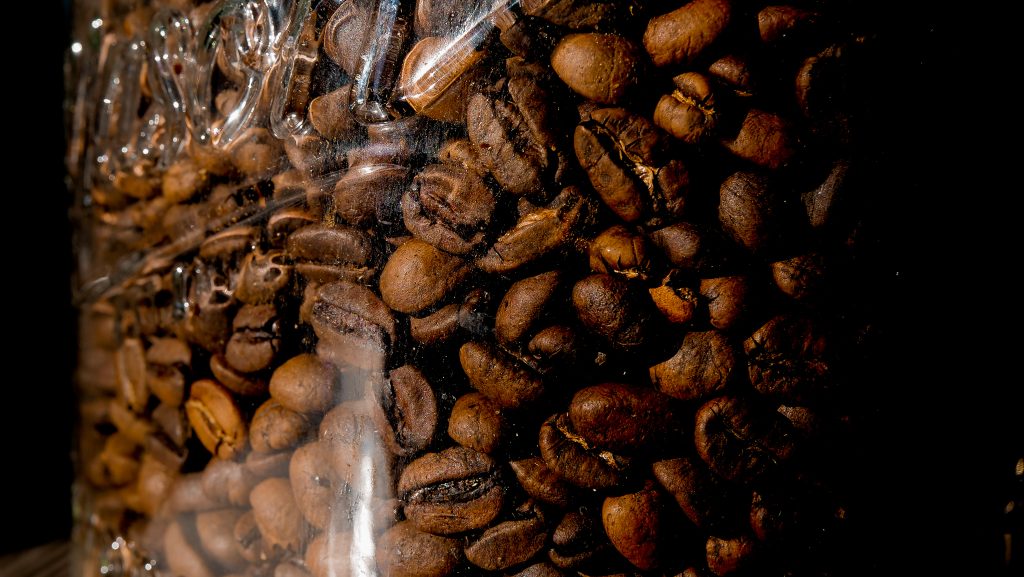
In Conclusion…
From our explorations into all things coffee, we may conclude that it is, perhaps more than any other substance in existence, paradigmatic of the culture of modernity. From controversies regarding altered states of consciousness to the regimentation of life brought about through the reign of clock time, from the exploitation of agricultural workers in the 3rd world to meet the needs of the Western consumer to controversies in the medical profession concerning the difference between medicinal and poisonous substances, coffee is both practically and symbolically encoded with many of the most pressing concerns of the culture of modernity. Our investigations into coffee have served to reveal the myriad ways in which everyday substances are always already embedded within and serve to reflect the complex cultural, economic, and political realities in which we exist. The tremendous extent to which plants play a role in shaping human culture through modification of the patterns of human thought and behaviour has also become clear. We have long ago reached the point that our world would be unrecognizable without coffee.
Footnotes:
1 Cemal Kafadar. ‘How Dark is the History of the Night, How Black the Story of Coffee, How Bitter the Tale of Love: The Changing Measure of Leisure and Pleasure in Early Modern Istanbul’ in Medieval and Early Modern Performance in the Eastern Mediterranean, ed. by Arzu Öztürkmenand Evelyn Birge Vitz, lmems 20 (Turnhout: Brepols, 2014).
2Mark Hay. ‘In Istanbul, Drinking Coffee in Public Was Once Punishable by Death.’Atlas Obscura, May 22, 2018. https://www.atlasobscura.com/articles/was-coffee-ever-illegal
3 Samuel Hahnemann, The Lesser Writings Of Samuel Hahnemann, ed. and trans. R.E. Dudgeon. New York: William Radde, 1852. Pg. 392.
4 Maria Letícia Galluzzi Bizzo et al. ‘Highlights in the History of Coffee Science Related to Health.’ Science Direct, 7 November 2014. https://www.sciencedirect.com/science/article/pii/B9780124095175000024
5 Joseph Kim et al. ‘Safest Roasting Times of Coffee To Reduce Carcinogenicity.’ PubMed, 1 June 2022. https://pubmed.ncbi.nlm.nih.gov/35226750/#:~:text=Abstract,or%20pesticides%2C%20by%20burning%20off.
6 Alice Nguyen. ‘Bitter Origins: Labor Exploitation in Coffee Production.’ Borgen Project, 24 September, 2020. https://borgenproject.org/labor-exploitation-in-coffee-production/
7 Brian Stoffel. ‘Urban Elites, Organic Farming & The Hypocrisy of No Skin-In-The-Game’. 14 June, 2017.
https://medium.com/@stoffel.brian/urban-elites-organic-farming-the-hypocrisy-of-no-skin-in-the-game-b9f95b655686
8 Mark Fisher. Capitalist Realism: Is There No Alternative? Oregon: Zero Books,2009. Pg. 18-19.
9 David Hoffmann. Medical Herbalism. Vermont: Healing Art Press, 2003. Pg. 519.
10 Ibid, pg. 124.
11 Ibid.
12 Ibid, pg. 365.
13 Jan Scholten. ‘Coffea Arabica.’ QJURE (undated publication). https://qjure.com/remedy/coffea-arabica-2/
Illustrations/Images:
- Illustration: Novel “Coffee: From Plantation to Cup. A Brief History of Coffee Production and Consumption” 1881 [x]
- Photos provided by Serena Mor
Chickweed: Materia Medica
Chickweed
Botanical name: Stellaria media
Pertinent Information on the Plant
- Skin irritations
- Eye inflammation (poultice for Glaucoma inflammation)
- Mild diuretic (increases urine flow)
- Kidney disorders
- Vulneraries
- Anti-microbials (destructive to microbes)
- Anti inflammatory
- Demulcent (soothing action on inflammation, especially of mucous membranes)
- Emollient (softens and soothes the skin)
- Anti rheumatic
- Alterative (blood purifier)
- Antipyretics (reduce or prevent fevers)
- Expectorant (facilitates removal of secretions)
- Antitussive (controlling or preventing cough)
- Psoriasis
- Eczema
- Acne
- Can be used as an ointment (combines especially well with marshmallow)
- Cuts and wounds
- Lungs
- Stomach
- Nutritive (rich in vitamins and minerals; a source of easily assimilated nutrients)
- High in calcium, potassium and iron
- Urinary tract infections
- Curbs obesity
Habitat and Growing area
- Native to Eurasia, especially anywhere moist cultivate soil
- Naturalized in North America
Extra Notes
- Chickweed is a remedy to use in times of transition. It supports a person in the first stages of grief, helping to assimilate a situation that is unexpected or where the circumstances are unforeseen. It is gentle and unassuming, yet surprisingly strong and insistent.
(Photos of Giant Chickweed)
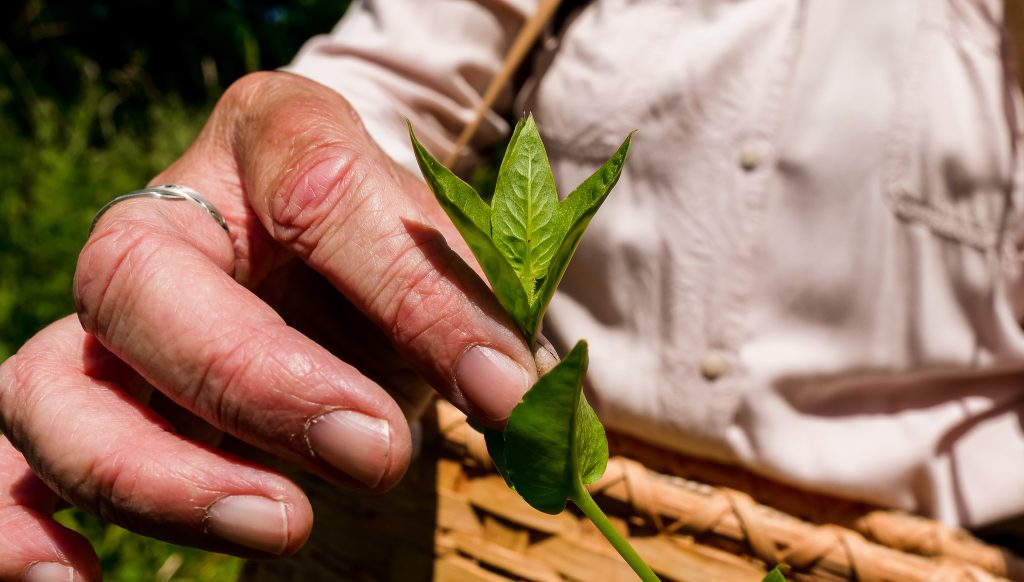
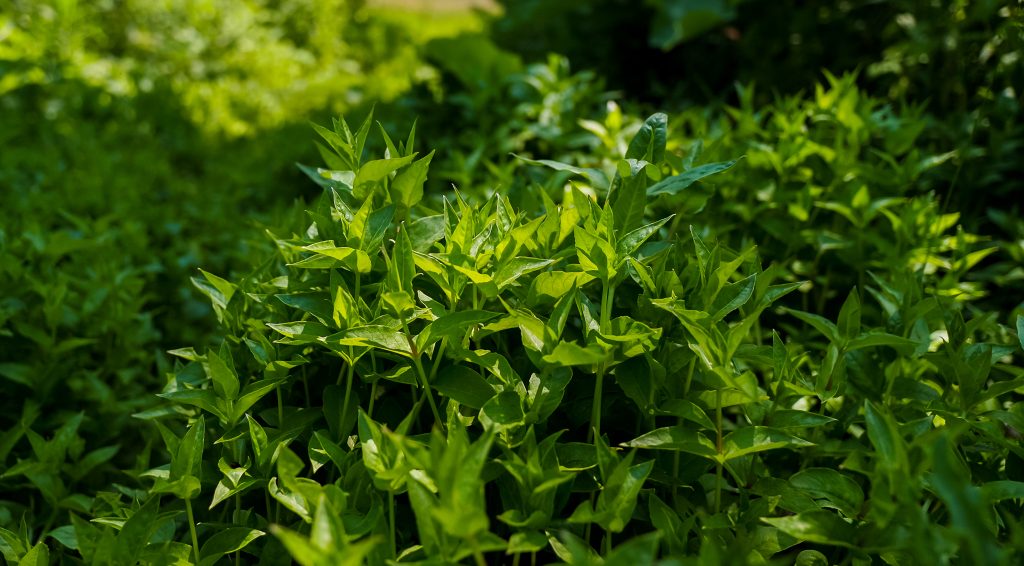
Reference Books:
Holistic Herbal, by David Hoffmann
Pages: 77-79, 138, 145, 160, 177, 191, 242
The Way of Herbs, by Michael Tierra
Pages: 13, 33, 34, 35, 118, 119
The Complete Encyclopedia of Herbs, by Nico Vermeulen
Page: 299
Family Herbal, by Rosemary Gladstar
Pages: 19, 55, 100, 102, 103, 105, 227, 284, 303, 323
Peterson Field Guide: Easter/Central Medicinal Plants and Herbs, by Steven Foster and James A. Duke
Pages: 48, 49
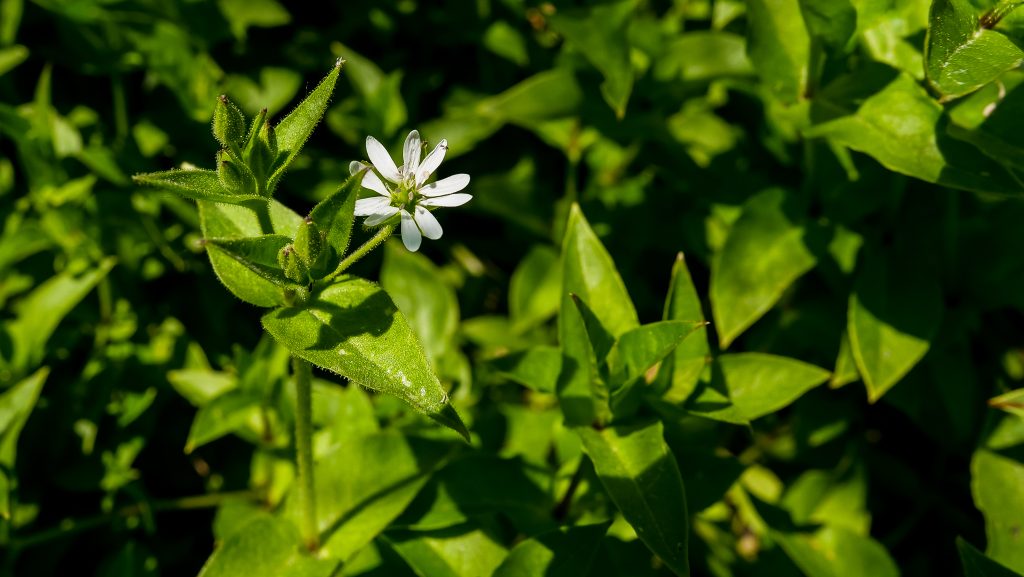
Goldenrod
Goldenrod
AKA: Solidago
Uses
- Used for kidney stones, urinary tract infections, bladder inflammation, digestive problems, colds and flu, sore throat, congestion, laryngitis, fatigue and surprisingly hay fever and allergies.
- Indigenous peoples boiled leaves and used them topically as an antiseptic and astringent for wound healing and relief from eczema, arthritis and rheumatism
A Little About Goldenrod
- This beautiful herb grows in plant colonies, some are 100 years old! Older, central plants may eventually die back, creating a ring, but usually colonies are too dense for other plants to invade. Surprisingly, Goldenrod has no allergens. It is not goldenrod that brings on fits of sneezing in the fall, but the inconspicuous ragweed that grows in the same conditions, the same area, and at the same time. The heavy sticky pollen of goldenrod is not wind-borne, because many different insects take over the task of its pollination.
Historically
- After the Boston Tea Party, when American colonists had dumped all the tea into Boston Harbor, they discovered they had lost their favorite beverage. Not to be deterred for very long, they found that an excellent tea could be made from the leaves of the North American goldenrod, and they named it Liberty Tea.
- The stiff stem of the plant was historically used as a divining rod, but that was only successful if used by the right person.
- Another belief is whenever golden rod grows near a house, its occupants will have good fortune. Still another holds that wherever goldenrod grows, there can be found buried treasure.
- There is also a legend about two little girls that were very close friends; one was golden blonde and the other was dark haired with beautiful blue eyes. They were afraid that when they grew up they might be parted from each other so they didn’t want to grow up. To solve their problem, the two little girls set out one day to visit the good witch who lived across the field far away. They came to the good witch after a long day of travel and told her of their wish to always be together. The little girls were never seen again, but whenever you see the golden yellow bloom of the goldenrod you will be sure to find the sweet blue aster always beside her.
Valerian: Materia Medica
Valerian
Botanical name: Valerian officinalis
Pertinent Information on the Plant
-
Nervine (relaxant, sedative)
-
Good for stress and anxiety
-
Great for cardiovascular problems
-
Nervous tachycardia (speeding up of heart rate due to stress, tension and anxiety can be helped)
-
Hypnotic (will induce sleep)
-
Anti-spasmodic (digestive spasms or colic can be relieved)
-
Sedative (calm the nervous system and reduce stress and nervousness throughout the body)
-
Headaches (Stress related, vascular)
-
Anti-depressant
-
Indigestion – due to stress
-
Gastritis – due to stress
-
Colitis – due to stress
-
Analgesics (Pain reliever for muscular, tooth ache, burns, Gall bladder, cuts, wounds, sore throat etc)
-
Dysphagia – problem with swallowing
-
Premenstrual tension
-
Menstrual cramps
-
Insomnia
-
Regulates sleep and restfulness
-
Shingles
-
Psoriasis
-
Menopause – anxiety or depression
-
Reduce sexual drive (sexual energy)
-
Carminative
-
Itching and skin rash (with burdock and Echinacea)
-
Itching from Poison ivy and poison oak
-
Strengthens and tones heart (hypertension and irregular and rapid heartbeat)
-
Herb is non addictive
-
Herb can be used long term
Habitat and Growing area
-
Widespread in damp meadows throughout Europe and is often on banks beside freshwater ponds and streams. I have many growing on our farm in Ontario. Can also be found locally on many roadsides.
Extra Notes
- Some people compare the smell of its flowers to dirty socks!
- A good ingredient in teas, especially bed time blends.
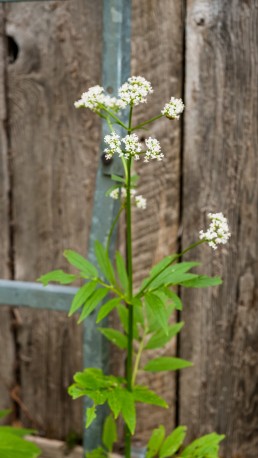
Reference Books:
Holistic Herbal, by David Hoffmann
Pages: 27, 28, 39, 53, 54, 56-60, 62, 65, 70-72, 74, 78, 86, 87, 95, 99, 101, 104, 105, 140, 143-146,159, 186, 194, 108 210, 221, 233, 238, 241
The Way of Herbs, by Michael Tierra
Pages: 12, 20, 26, 32, 34, 36, 202,
The Complete Encyclopedia of Herbs, by Nico Vermeulen
Page: 299
Family Herbal, by Rosemary Gladstar
Pages: 50, 86, 26, 48, 49, 61, 63, 69, 75, 79, 85, 88, 96, 98, 99, 101, 111, 187, 261, 277, 295, 368-70
Peterson Field Guide: Easter/Central Medicinal Plants and Herbs, by Steven Foster and James A. Duke
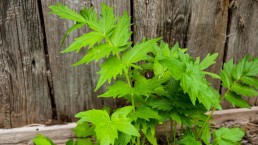
Herbal Actions: Demulcents
What is a “herbal action”?
When we speak about the action(s) of a certain plant, we are referring to one or more effects a plant can have on our body. Often these actions are explained in two or three words; however, herbal actions are so much more than that! Since plants are wonderful complex beings, they also have several actions. Most herbs can compliment their action(s) in combination with another herb, basically showing off their best side with the support of a “good friend”. Sometimes they work great on their own, but most of the times, they excel with a good buddy on their side. Think- Teamwork!
Demulcents
Let’s have a talk about our “Gentle Healers”. Not only are demulcent herbs soothing and gentle, but they also tend to be very nutritive. They are gently supporting and helping us to heal. A group of herbs you simply have to love…
Demulcent herbs are rich in carbohydrate mucilage, which is composed of heteropolysaccharides (various forms of sugars). These posses the ability to bind themselves to water, which will then turn viscous/gel like and stick to the surface of the plant material. Have you ever made yourself a pot of chia pudding? You may have noticed how the dried seeds swell up after a few minutes of being exposed to water (both warm or cold). They can build what seems like a soft cocoon of viscous mucilage around them. A leaf of common mallow will also easily demonstrate this effect – notice how after a few times chewing your saliva turns viscous and gel-like?
Did you know that some plants like to use this feature of the mucilaginous, “slimy cocoon” to spread their seeds? When ingested by animals, the protective coat often helps prevent the eaten seeds from being digested. You can guess what happens next… The animals defecate the coated seeds and give them a little boost with their very own fertilizer. Fascinating!!
Generally Speaking, Demulcents are Indicated in:
- Dry, tight tissues
- Inflammation with dried out mucous secretion
- To cool, coat and soothe
- To stimulate peristalsis in constipation
- As binder in cases of diarrhea
- Soothe stomach and esophageal tissue from acid burn
- Prevent ulceration
- Irritations in the urinary tract
- As lubrication and skin emollient
The energetics of demulcents are fairly straight forward; they are generally moist and tend to be cooling. Due to the polysaccharides, they tend to have a sweet taste. We also have to remember that the energetics of a herbal action are more of a guideline. Considering the individual herb to more properly “classify” its energetics is the right path to go.
Examples of Some Demulcent Plants
Demulcents for the digestive tract:
Althea officinalis (Marshmallow), Plantago scarba (Psyllium husk) or Linium usitatissimum (Flax seeds). Demulcent herbs have to ability to lay a protective coat over mucous membranes and other tissue it comes in contact with. Therefore, demulcents used in the digestive tract have the ideal conditions to show of their best side.
Demulcents for the respiratory tract:
Verbascum Thapsus (Mullein), Tussilago farfara (Coltsfoot), Althea officinalis (Marshmallow). By providing a protective coat over the inflamed airways, demulcents soothe and function as analgesics, anti-inflammatory and as protective layer over the mucous membranes.
Emollient herbs for the skin:
Linium usitatissimum (Flax seeds), Symphytum officinale (Comfrey), Althea officinalis (Marshmallow). Many herbalists refer to mucilage internally used as demulcents and topically used as emollients. Emollients help provide flexibility to dry, irritated and inflamed skin conditions. Often times, applying the herb in form of a poultice seems to work very effectively.
Demulcents for irritation in the urinary tract:
Elymus repens (Couch grass), Zea mays (Conrsilk) and Althea officinalis (Marshmallow) are all excellent demulcents for any irritation, burning, and other irritable sensations in the urinary tract and have been used very successfully over many generations. Diuretics working on solid material work best with the assistance of lubricating demulcents.
Preparing a Cup of Tea
Traditionally, most demulcents are prepared via cold infusions. The reason behind this is that we are focusing to mainly extract the mucilaginous polysaccharides – our gentle healers… If you are preparing milder or more complex demulcents, you might be looking at a hot infusion.
A very effective way is to infuse 1-2 tbsp of dried herb into 1 liter of cold water. Let this sit overnight. In the morning, you have a wonderful soothing infusion. You could also just let it sit for a few hours, but the longer the herb infuses, the more viscous the tea will get.
Especially on hot and dry days, you might want to consider adding some Althea officinalis root to your water; it will help you stay better hydrated and tastes super yummy!
I hope this post gave you a little insight on demulcent herbs and how they can interact with our body. This topic is covered much more in depth in the herbal course, which is currently developed and coming soon by our group of wonderful herbalists.

Comfrey Leaf (Symphytum officinale)
Resources:
Besides my own words and oral teachings from many wonderful herbalists, this write up features’ information from the following resources:
Ursel Buehring Praxis- Lehrbuch Heilpflanzenkunde – Grundlagen – Anwendung – Therapie. 4 ueberarbeitete Auflage. Karl F. Haug Verlag in MVS Medizinverlage Stuttgart GmbH & Co. KG’ 70469 Stuttgart, Germany. 2014. (Published in German language)
Jim McDonald – Foundational Herbcraft – www.herbcradft.org – collected writings from www.PlantHealkerMagazine.com.
David Hoffmann – Medicinal Herbalism: The science and practice of herbal medicine. Healing Art Press, Rochester, Vermont 05767. 2003.
Abrah Arneson – The Herbal Apprentice: Plant Medicine and the Human Being – Green Heart Press. 2014.
Matthew Wood – The practice of Traditional Western Herbalism – Basic Doctrine, Energetics and Classification – North Atlantic Books, Berkley, California. 2004.
Rosemary Gladstar –Rosemary Gladstar’s Herbal Recipes For Vibrant Health: 175 Teas,…- Storey Publishing, LLC – September 3, 2008
Talking About: Adaptogens
Adaptogens
What Are Adaptogens?
Often times, we have to just listen very closely to a client’s story and they will actually tell us the answer themselves. The same concept applies to the term “adaptogen” – listen closely “adaptogen” – “to adapt” – “adapting”… Looking at it from a broad view, this is what this group of herbs does. Adaptogens help us adapt to both environmental and psychological stresses.
It is said that 75% – 90% of all doctor visits in North America may have a stress-related component. Clearly, our bodies are sending us signals – these signals can include loss of interest, poor memory or feelings of worry and fear. Symptoms can also include (but are obviously not limited to) manifestations which we may not even relate to stress; like feelings of tension, fatigue or digestive issues.
If our body is unable to naturally recover from stress, there are two essential ways to support it in its ability to cope and recover. The first one is to address the initial stressors and find ways to limit the root cause. The second is to introduce the “super-heroes” of the herbal world – Adaptogens.
Any reputable herbalist will support clients in both ways. They will help find a herb that suits the individuals needs best, usually within a personalized formula, but will also share effective techniques to help cope with stress and exhaustions.
In summary, adaptogens:
- Increase resilience
- Increase physical performance
- Increase coordination, cognitive performance, memory and concentration
- Improve mental and physical activity and stamina
- Have a tonifying and immunomodulating effect
Getting a Hand on the Root Cause
Yes, adaptogens are amazing. They are the number one group of herbs to help us become more resilient to stressful situations and support our organism when suffering from stress related fatigue and other symptoms. However, when working with adaptogens, we have to keep in mind that they can certainly help us “adapt”, but also, adaptogens will only effectively work long term if we also address the root cause that has brought one to this state of physical and emotional exhaustion. Biological stressors, chemical stressors, consumable stressors, environmental stressors, psychological, physical, as well as spiritual stressors all have to be addressed. Trying to fix symptoms instead of addressing the root problem can be dangerous.
Apoptogenic Herbs
If you think adaptogens are what’s needed in your life, be sure to find the right one for YOU. Adaptogen isn’t always adaptogen. For example, if one lit their candle on both ends and as a result crash and are burned out, a relaxing adaptogen like Ashwagandha might not be the first choice. We might want to work with a more stimulating herb like Rhodiola. But even then, if the client’s constitution tends to be rather dry, Rhodiola might, in the long run, irritate even more. Therefore, in order to receive the best long lasting results, it is always advised to contact a professional herbalist to help find which adaptogen might work best.
Examples of Some Apoptogenic Herbs
Rhodiola rosea (Rodiola) – Stimulating
Can help with brain fog, increase concentration, memory as well as mental capacity. Has also been recognized to help with depression, particularly the “winter blues” (SAD).
Eleutherococcus senticosus (Eleuthero, Siberian Ginseng) – Stimulating
Eleuthero is helpful for those who can’t get out of bed, even after a full night of sleep. For those dragging through the day, foggy brain… Eleuthero supports a depleted immune system by promoting natural detoxification processes in the liver.
Withania somnifera (Ashwagandha) – Strengthening without stimulating, calming
Particularly helpful for individuals who seem depleted and “worn out”. Has been used to heighten intellectual capabilities and longevity, for those with insomnia, wired/cloudy thinking and fatigue. Ashwagandha has improved long and short-term memory in people with mild cognitive impairments and has successfully been used those with OCD and ADHD.
Schisandra chinensis (Schisandra) – calming
Schisandra creates a calm feeling while increasing focus and gently boosting physical energy levels. It has hepatoprotective properties, meaning that it is liver protecting and blood purifying. Schizandra is thought to enhance the endocrine system and nonspecific immune system function, which is the one most affected by stress.
Ocimum sanctum (Tulsi/ Holy basil) – relaxing
This calming and relaxing adaptogen has been successfully used to help manage stress, poor memory, anxiety and be of support when one feels irritable. Tulsi clears the Aura, gives the power of awareness and harmonizes. Tulsi may also be beneficial in cognitive disorders such as Alzheimer’s disease and dementia.
I hope this post gave you a little insight on adaptogenic herbs and how they can interact with our body. This topic is covered much more in depth in the herbal course, which is currently developed and coming soon by our group of wonderful herbalists.
Resources:
Besides my own words and oral teachings from many wonderful herbalists, this write up features’ information from the following resources:
Ursel Buehring Praxis- Lehrbuch Heilpflanzenkunde – Grundlagen – Anwendung – Therapie. 4 ueberarbeitete Auflage. Karl F. Haug Verlag in MVS Medizinverlage Stuttgart GmbH & Co. KG’ 70469 Stuttgart, Germany. 2014. (Published in German language)
Jim McDonald – Foundational Herbcraft – www.herbcradft.org – collected writings from www.PlantHealkerMagazine.com.
Abrah Arneson – The Herbal Apprentice: Plant Medicine and the Human Being – Green Heart Press. 2014.
Paula Grainger – Adaptogens, Harness the power of superherbs to reduce stress & restore calm – Octopus Publishing Group Ltd. 2018
Adriana Ayales – ADAPTOGENS, Herbs for Longevity and Everyday Wellness – Sterling Publishing Co., Inc., New York. 2019
https://www.webmd.com/balance/stress-management/stress-and-the-body
Dandelion: Materia Medica
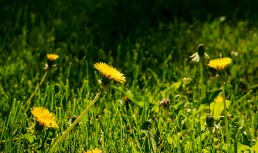
Dandelion
Botanical name: Taraxacum Officinal
Pertinent Information on the Plant
- Alterative (blood purifier)
- Hepatics (having to do with the liver)
- Diuretic (increases urine flow)
- Anti-rheumatics (easing pain of rheumatism and inflammation of joints and muscles)
- Antibilious (helps body remove excess bile and thus aid in cases of biliary and jaundice conditions)
- Laxative (substance that acts to loosen the bowels contents)
- Cholagogues
- General Tonic (liver, blood, kidneys)
- Digestive bitter (improves digestion)
- Varicose veins
- Skin conditions
- Bitter
- Water retention
- Builds energy
- Nervine, high in calcium, iron
- Herpes
- Rashes
- Beats out milk thistle for taking care of liver
- Old name Pissinlct – makes us pee and pee
- Leaf – diuretic (increases urine flow)
- Root – liver – anti-inflammatory
- Good for gas and bloating
- Whole dandelion is good for hypertension
Habitat and Growing area
- Found widespread colouring meadows and waste places in April – May. Dandelion is found here in Ontario on our farm, lawns and disturbed soil
Extra Notes
- Taste is bitter and sweet. Smells earthy, very delicious cup of tea
- Used in many nutritious and digestive tea blends
Reference Books:
Holistic Herbal, by David Hoffmann
Pages: 27, 31, 52, 54, 61, 62, 71, 78, 79, 85, 89, 101, 109, 111, 121, 128, 143-147, 156, 182, 189, 196, 205, 243
The Way of Herbs, by Michael Tierra
Pages: 12, 13, 32, 35, 36, 37, 127-128, 314-315
The Complete Encyclopedia of Herbs, by Nico Vermeulen
Page: 285
Family Herbal, by Rosemary Gladstar
Pages: 19, 25, 28, 32, 51, 55, 78, 85, 91, 94, 100, 102, 105, 189, 193, 200, 201, 203, 206, 218, 219, 221, 227, 255, 256, 263, 277, 326-27
Peterson Field Guide: Easter/Central Medicinal Plants and Herbs, by Steven Foster and James A. Duke
Pages: 145, 146
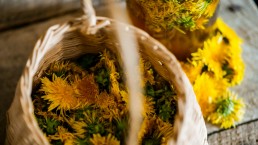
Motherwort: Materia Medica
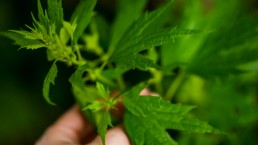
Motherwort
Botanical name: Leonorus cardiaca
Pertinent Information on the Plant
- Emmenagogue (agent that regulates and induces normal menstruation)
- Suppressed menstruation
- Female disorders
- Relieving menstruation cramps
- Menopause (water retention, hot flashes, M=mood swings)
- Aids in child birth
- Heart tonic
- Heart palpitations
- Add to cough formula when someone has bad heart
- Add to asthma formula when someone has a bad heart
- Nervine relaxant (calm nervous tension and nourish the nervous system)
- Sedative (exerts a soothing, tranquilizing effect on the body)
- Antispasmodic (calming nervous and muscular spasms or convulsions)
- Hepatic (having to do with the liver)
- May be used to alleviate false labor pains
- Diuretic (increases flow of urine)
- Carminative (causing the release of stomach or intestinal gas)
- Antioxidant (prevents or inhibits oxidation)
- Fevers
- Stomach aches
Habitat and Growing area
- Found on our farm in Ontario Canada
- Likes to grow in disturbed ground; pasture land and fence line
Extra Notes
- A beautiful addition to heart tonic tea and menstruation teas
Reference Books:
Holistic Herbal, by David Hoffmann
Pages: 26, 27, 28, 38, 39, 65, 78. 99, 101, 104, 144-147, 183, 215
The Way of Herbs, by Michael Tierra
Pages: 158-159
The Complete Encyclopedia of Herbs, by Nico Vermeulen
Pages: 168
Family Herbal, by Rosemary Gladstar
Pages: 203, 205, 228, 261, 295, 350
Peterson Field Guide: Easter/Central Medicinal Plants and Herbs, by Steven Foster and James A. Duke
Pages: 182, 183

